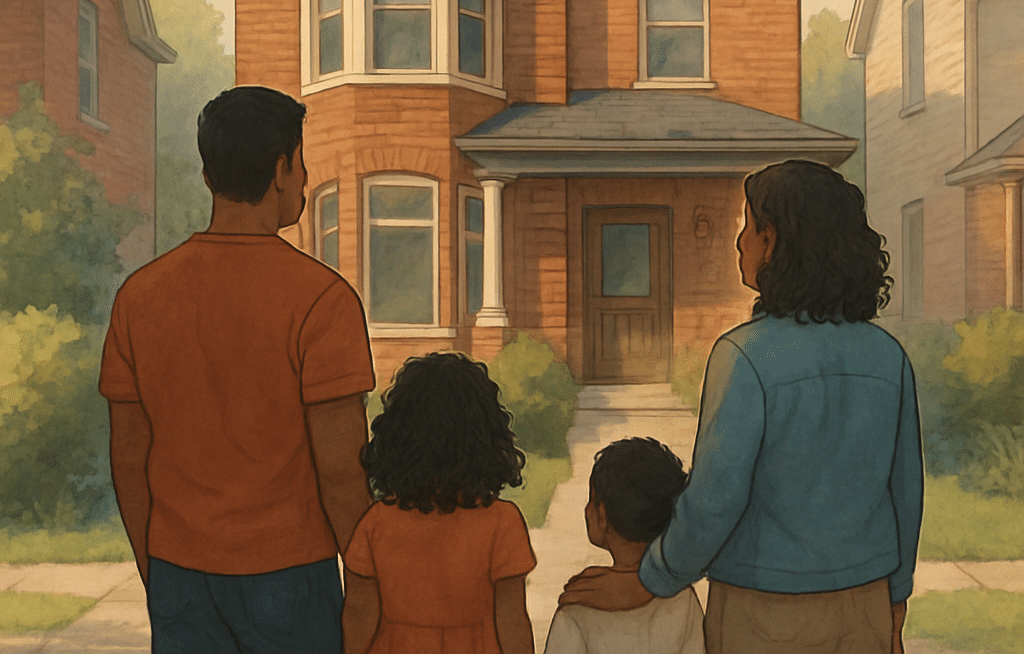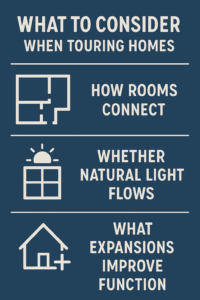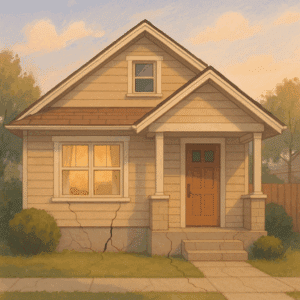When families outgrow their current home, the natural next step is to look for something bigger. More bedrooms, more storage, a larger kitchen, or simply more breathing room – whatever the reason, upsizing often sparks a fresh wave of excitement. In a market like Toronto’s, “perfect” homes are also the most competitive and the most expensive.
That’s why more buyers today are approaching upsizing with renovations at the forefront of their strategy. Instead of searching for a fully finished home, they’re seeking properties with underlying value – homes that might need updating, modernizing, or reconfiguring, but offer the bones and structure to build exactly what their family needs.
Upsizing with renovations is a practical move, especially in established neighbourhoods where charm, lot size, and school districts matter more than a recently updated kitchen. For many families, buying a home with potential is the surest way to get into the right neighbourhood without overspending on finishes they’ll want to change later anyway.
If you’re considering upsizing with renovations in mind, here’s how to properly evaluate a property, understand where the real value lies, and spot opportunities that can grow with your family.
Upsizing with Renovations: Seeing Beyond the First Impression
Many homes with great potential go overlooked simply because they need cosmetic updates. A dated colour palette, old carpeting, or cluttered rooms can turn buyers away before they’ve even considered the layout. The families who succeed on upsizing with renovations are those who can see past these surface details.
When you walk through a home, try to visualize it empty. Ignore the furniture, paint colours, and décor choices. Instead, imagine the space with your furnishings, your style, and your daily routine. The question to focus on is not “Does this home look nice today?” but rather, “Could this home support the way we live once it’s updated?”
This shift in mindset opens up properties you may never have considered – and often at a much better price point than recently renovated homes nearby.
Location and Structure: The Two Non-Negotiables
Upsizing with renovations in mind can transform almost anything inside a home, but two key elements can’t easily be changed: the location and the structure. When upsizing with renovations in mind, these are your anchors in the decision-making process.
A home in the right neighbourhood – close to good schools, transit, parks, and amenities – will pay dividends for years to come. Families often prioritize communities like Don Valley Village and Clanton Park, where larger lots, established streets, and solid mid-century homes provide the perfect foundation for renovation. These neighbourhoods offer space to grow, resale stability, and the kind of community feel families want long-term.
Just as important is structural integrity. A house with straight walls, a solid foundation, and a healthy roofline will give you more freedom to redesign and reconfigure without sinking your budget into repairs you didn’t anticipate. Cosmetic updates like flooring, paint, hardware, and fixtures are simple compared to correcting major structural issues.
A good home inspector is essential when upsizing with renovations. Before committing, you’ll want insight into the home’s electrical, plumbing, insulation, and overall durability. Renovations are exciting – but surprises hidden behind walls never are.
Layout: The Secret to Unlocking Potential
If structure and location are your foundation for upsizing with renovations, layout is where the fun begins. Many older Toronto homes were built with smaller, closed-off rooms and separate dining spaces. While charming, these floor plans don’t always suit today’s preference for open-concept living.
The good news: a solid structure usually means the layout can be changed. Walls can come down, rooms can be expanded, and spaces can be reimagined to better support modern family life. A boxed-in kitchen can become part of a large, connected entertaining area; a dark basement can become a bright media room or guest suite. There’s plenty of things to look for beyond bedrooms and bathrooms, so when touring homes consider the following:
- How rooms connect to each other
- Whether natural light flows easily
- Whether expanding a space would realistically improve functionality
Homes with rigid or awkward layouts may not be worth the investment, while those with simple walls separating common areas are often ideal candidates for renovation.
Understanding Hidden Value: What Matters Most
This is where families often feel unsure – how do you know if a home has real hidden potential or if it’s simply old? The difference lies in what you’re able to improve without overspending.
Key Signs a Home Has Renovation-Friendly Potential
- A strong, adaptable floor plan with rooms that can be opened or expanded
- A generous lot that allows for additions, garden suites, or outdoor upgrades
- Natural features worth preserving (original hardwood, fireplaces, large windows)
- A neighbourhood where renovated homes have strong resale value
These are the elements that give your renovation purpose and long-term payoff. Homes that check these boxes often become your best investment – and your favourite place to live.
Avoiding the Money Pit
Even the most inspiring fixer-upper can become overwhelming if the wrong red flags appear. Upsizing with renovations in mind means staying grounded while dreaming big.
Be cautious of homes with extensive structural issues, persistent moisture problems, knob-and-tube wiring, or deteriorating foundations. These challenges aren’t dealbreakers for every buyer, but they can shift a project from realistic to risky, especially for families working within timelines or budgets.
Another important consideration for upsizing with renovations is neighbourhood value. Every community has a resale “ceiling.” If a home requires renovations that exceed what similar homes sell for in that area, your investment may not recoup its cost. A realtor experienced in renovation-friendly homes can pull comparable data to help you make an informed decision.
Why Renovation-Focused Upsizing Makes Sense for Families
For many families, the appeal of this approach comes down to customization and long-term value. Buying a finished home means accepting someone else’s design choices. Upsizing with renovations gives you the freedom to create a layout, look, and feel that reflect how your family lives.
It also creates an accessible way into desirable communities where move-in-ready homes are priced at a premium. A well-located, slightly outdated home allows you to prioritize the neighbourhood first, and slowly renovate as your budget allows.
When the time comes to sell, homes that have been thoughtfully updated – especially in family-friendly areas – tend to attract strong buyer interest.
Working With the Right Team
Choosing homes with renovation potential requires trained eyes. Realtors experienced in identifying “good bones” can tell you which properties offer the most value and where the smartest improvements can be made.
They can also guide you on zoning bylaws, renovation feasibility, and which properties will support the long-term needs of upsizing families – such as adding a secondary suite, finishing a basement, or expanding a main floor.
If you want deeper support, connect with our team so they can help connect you with inspectors, contractors, and designers who specialize in family-focused renovations across Toronto.
Bringing It All Together
The perfect family home isn’t always the one that looks polished on day one. Sometimes, it’s the one waiting for your imagination, your style, and your future plans.
Upsizing with renovations in mind allows you to see opportunities where others see imperfections. It gives you the power to prioritize location, structure, and long-term value – and to shape a home that grows with your family’s needs.
When you’re ready to begin exploring homes with potential, you can browse current listings in Toronto. We’ll help you spot renovation-ready opportunities and guide you toward a home that’s full of possibility – inside and out.
Sometimes the right home isn’t the one that’s already finished. It’s the one that’s ready for your next chapter.







